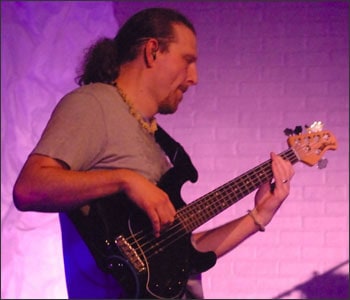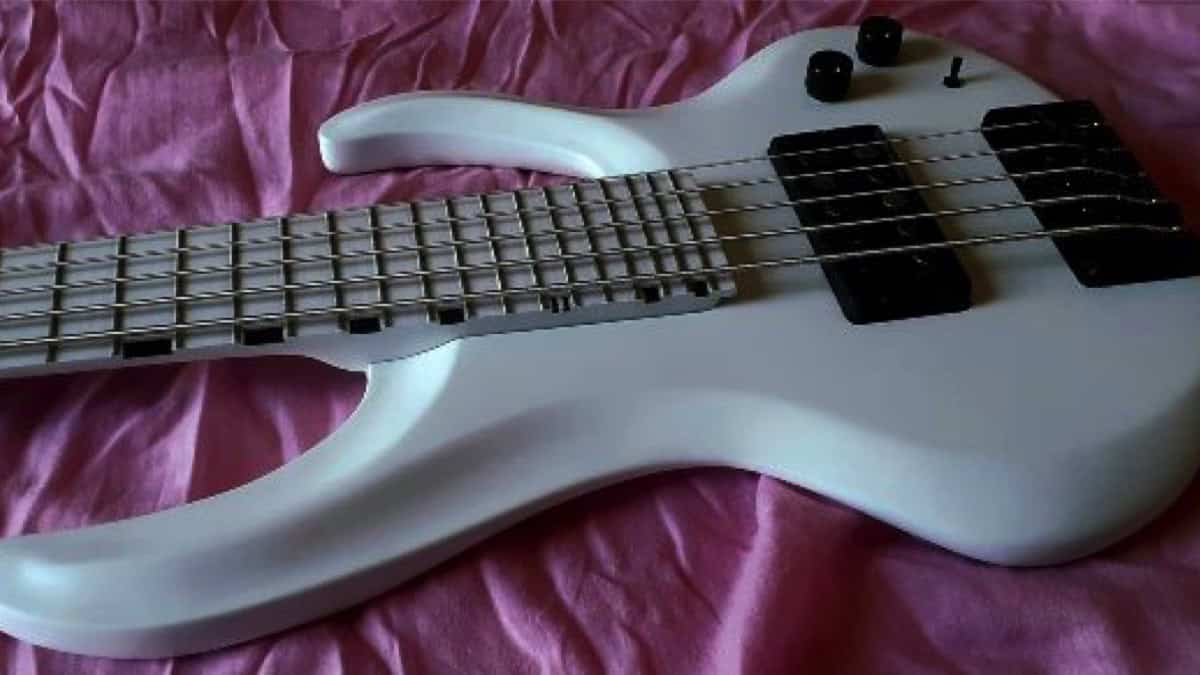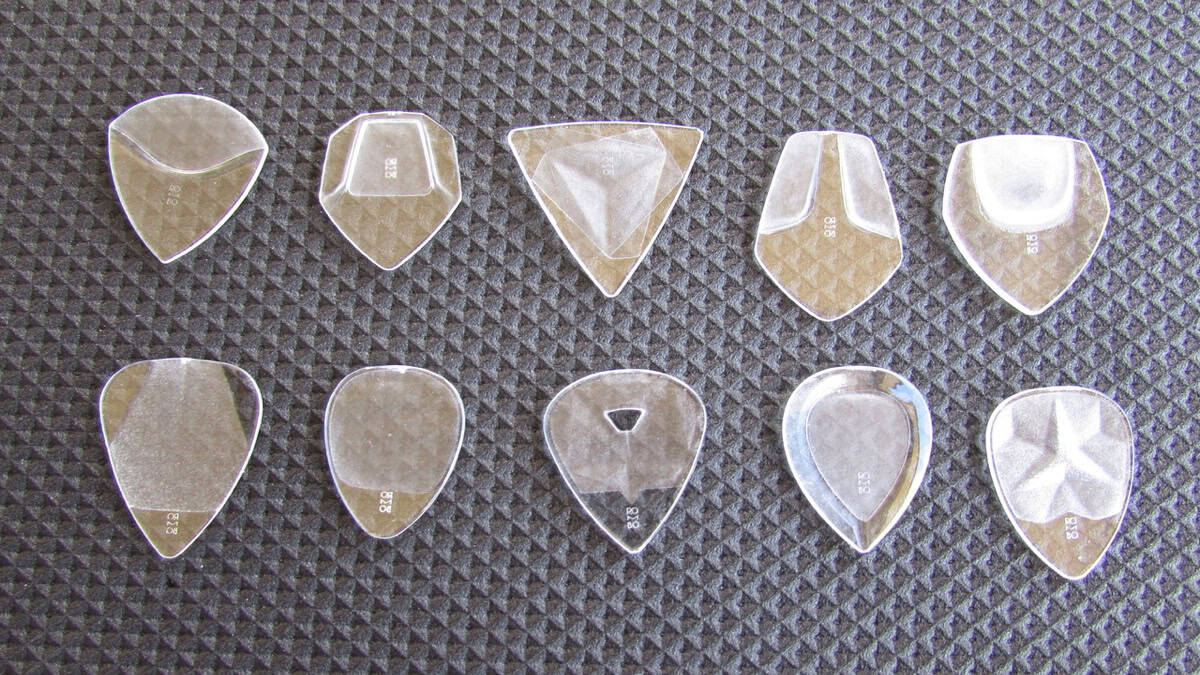Latest
Practicing with Lasers by Steven Gregory

 It seems obvious: if we want to truly become excellent worship bass musicians, we must practice our craft. However, how to practice (and how to do so effectively and efficiently) is one of the biggest problems in the worship bass world (and often, in the bass world in general). Many of us have had symptoms of inefficient practice:
It seems obvious: if we want to truly become excellent worship bass musicians, we must practice our craft. However, how to practice (and how to do so effectively and efficiently) is one of the biggest problems in the worship bass world (and often, in the bass world in general). Many of us have had symptoms of inefficient practice:
- Spending hours and hours every day practicing, without much actual improvement.
- Not having enough time to practice regularly.
- Thinking that “cramming” to learn songs for the week is all there is to practice.
- Applying the “practice” label to rehearsals, noodling, warming up, playing the same song you learned 5 years ago…anything other than truly meaningful practice.
- Spending practice time randomly wandering from task to task, with no real direction.
Practice was absolutely a burden for me when I first arrived at Berklee. I had great intentions, but I just didn’t know what to do with my practice time. I spent hours in the practice room where I would start one thing, then move to another, then waste time on a cool lick that I already knew how to play, then snap myself back to run scales for a few minutes…until I was tired, frustrated, and not improving.
This changed when I met Jim Stinnett (http://www.jimstinnett.com), who became my teacher and mentor. Jim is an outstanding bassist and educator who has the uncanny ability to cut straight to the heart of a student’s problem. Jim saw my problem within seconds and prescribed the perfect remedy: laser practicing.
“Laser practicing” is about applying intense focus, without distraction, to your practice. This method, which Jim developed and I will simply pass along, takes care of the aforementioned problems and many, many more. To engage in laser practicing you need a timer, a notebook, items to study, and at least one hour a day to practice.
The basic outline of laser practicing is as follows:
- Determine the areas of study you will practice.
- Divide your time so that every area of study has a “slice” of your total time.
- Start the timer and practice the first area without distraction until the timer goes off.
- Make quick notes about the first area, start the timer again and practice the next area without distraction.
- Repeat until the hour is done.
By using bursts of complete focus, you can cut through problems and make amazing gains, much in the same way that the focus of a laser can cut through material that unfocused light would have no effect on.
Let’s look at an example, using a student named Fred, who has five areas he would like to practice:
- Minor arpeggios
- Walking bass lines
- Slap grooves
- Worship songs for the week
- Sight reading
We will assume that Fred has specific materials for each of these areas, as was directed by his instructor, along with his weekly worship music set. Fred outlines the day’s practice as shown in Example 1:
In Fred’s example, each of these items will get an equal “slice” of the hour, which equals 12 minutes. Fred starts his timer and begins to practice his minor arpeggios around the cycle of 4ths. Complete and total focus is given to the arpeggios – not the other tasks, not the song Fred really likes to play, just the arpeggios. When the timer goes off 12 minutes later, Fred stops immediately, writes some quick notes about the session, then restarts the timer and works on the next area. Fred does this for the remainder of the hour and finishes with a sheet that looks like Example 2:
After a single hour, Fred has truly practiced 5 areas of study and has notes on which he can build his next laser cycle. If Fred has another hour to practice that day, another cycle is started. If Fred only spends one hour a day practicing in this manner, he is absolutely going to see improvements that he would not have experienced by practicing without focus for many more hours.
Laser practicing is a radical departure for many and there are many common questions that arise. Here are few of those questions, with responses:
Q: You’re kidding, right?
A: Nope. I thought it was a nutty idea too, but I encourage you to try it for a couple of weeks. I can promise that it will feel odd and that you will want to ignore the timer, but don’t. The results are worth it!
Q. Do you have to evenly divide the hour?
A. Even divisions work best for beginning laser practice sessions, but that is not a hard and fast rule. You can adjust as needed, but I have found that creating a “slice” that is less than 7-8 minutes or more than 13-14 minutes isn’t effective. You are trying to focus with incredible intensity for each slice, so give yourself enough time to “settle” into that focus, but don’t overextend yourself.
Q. Transcription in laser practicing? That won’t work! I can’t learn the songs for the week unless I set aside a separate session for that.
A. Focus, grasshopper. Without distraction and with intense focus, you can absolutely transcribe music in short bursts.
Q. I don’t have an hour to practice!
A. I said this in front of Jim once, who simply said, “Get up an hour earlier!” We may not like to admit it, but I’m positive that 99% of us can find an hour a day to practice by getting up earlier, staying up late, turning off the television, or some other “trimming” of our schedule. Decide that excellence is worth finding that hour!
Q. Why should I keep notes?
A. Notes are very important to this process. The notes keep you focused and create a record so you can track improvement.
Q. Isn’t stopping one section when the timer goes off incredibly frustrating?
A. It can be, but you can always practice that section again…in the next cycle.
Q. Have you ever used this for a time other than an hour?
A. Yes, but an hour is best. If you have multiple hours, do multiple cycles. When I’ve had an “odd time”, such as 90 minutes, I’ve often done one cycle and then repeated a few of the “slices” for the last 30 minutes. I have used laser practicing to make the very best use of a 30-minute window, as well. Refer to the above question about how you divide the time to make sure you don’t cheat yourself from meaningful “slices”.
Laser practicing truly revolutionized my playing and I hope you will give it a try also. Take your worship, musicianship, and bass playing to the next level with the focus of a laser! Make sure you let me know how it goes by catching me on Twitter (@sgregorybass) or in the Bass Musician Magazine Community.
Until next time, I hope that your bass playing is blessed and that you can bless others through your bass playing!
Gear News
New Gear: Alberto Rigoni Signature Bass, the VPR5 by Gaetano Costanzo!

Alberto Rigoni Signature Bass, the VPR5 by Gaetano Costanzo!
Internationally renowned bassist ALBERTO RIGONI (soloist, BAD AS, Vivaldi Metal Project, TwinSpirits, etc.) is proud to announce the release of his signature bass VPR5 made by renowned Italian luthier Gaetano Costanzo!
The bass is entirely handmade in Italy, without the use of CNC or other machinery, and has rather special features. The VPR is a 5-string bass (but also available as a 4-string) with 30 frets, Seymour Duncan pickups, Music Man Alnico style, passive electronics (volume, tone and a switch to select series/parallel/single-coil mode), alder body, and American maple neck and fingerboard. Gotoh tuners that ensure perfect intonation. The bass is totally painted white (nitro finish) but other colors can be requested. The VPR has a weight of about 2.9 kg and suitable for any genre.
For more information contact Gaetanobass77@gmail.com or visit online at www.instagram.com/gaetanocostanzoluthier or www.facebook.com/GaetanoCostanzoLuthier
Bass Videos
Interview With Bassist Graham Stanush

Bassist Graham Stanush…
Return to Dust is keeping Grunge alive and well! They have a new self-titled album that went out on May 3rd, 2024 and will be super busy promoting this project in the near future.
Graham Stanush is the bass powerhouse driving their sound and adding vocals to the mix. Join me as we hear all about Graham’s musical journey, details about the new album, how he gets his sound and their plans for the future.
Featured Videos:
Visit Online:
linktr.ee/returntodust
instagram.com/returntodustband/
twitter.com/Returntodustbnd
youtube.com/@returntodustband
tiktok.com/@returntodustband
Bass Videos
Review: CrystalBright Rombo Picks

CrystalBright Rombo Picks
PR SamplePlaying bass with a pick is still a touchy subject in our community. I believe you should be able to use whatever you need to get your sound. Even though I mostly play with my fingers, I like to check out innovative new picks that might have something new to offer, sonically speaking.
Judith and Carlos from Rombo recently contacted me about a new material called CrystalBright that they have been researching for the last 12 months and offered to send some prototype picks. After trying them out, I put together this video with my findings.
For more info check out @rombopicks
Latest
This Week’s Top 10 Basses on Instagram

Check out our top 10 favorite basses on Instagram this week…
Click to follow Bass Musician on Instagram @bassmusicianmag
FEATURED @sireusaofficial @ricardosguitars @gullone.bajos @godin_guitars @sandbergguitars @adamovicbasses @bassbros.uk @baumguitars @harleybentonofficial @dingwallguitars
Gear
New Joe Dart Bass From Sterling By Music Man

Sterling by Music Man introduces the Joe Dart Artist Series Bass (“Joe Dart”), named after and designed in collaboration with the celebrated Vulfpeck bassist.
Above photo credit: JORDAN THIBEAUX
This highly-anticipated model marks the debut of the Dart bass in the Sterling by Music Man lineup, paying homage to the Ernie Ball Music Man original that all funk players know and love. The bass embodies many of the original model’s distinctive features, from its iconic minimalist design to the passive electronics.

The design process prioritized reliability, playability, and accessibility at the forefront. Constructed from the timeless Sterling body, the Dart features a slightly smaller neck profile, offering a clean tone within a comfortable package. The body is crafted from soft maple wood for clarity and warmth while the natural finish emphasizes the simple yet unique look.
Engineered for straightforward performance, this passive bass features a ceramic humbucking bridge pickup and a single ‘toaster’ knob for volume control. Reliable with a classic tone, it’s perfect for playing in the pocket. The Dart is strung with the all-new Ernie Ball Stainless Steel Flatwound Electric Bass Strings for the smoothest feel and a mellow sound.

The Sterling by Music Man Joe Dart Bass is a special “Timed Edition” release, exclusively available for order on the Sterling by Music Man website for just one month. Each bass is made to order, with the window closing on May 31st and shipping starting in November. A dedicated countdown timer will indicate the remaining time for purchase on the product page. Additionally, the back of the headstock will be marked with a “2024 Crop” stamp to commemorate the harvest year for this special, one-of-a-kind release.
The Joe Dart Bass is priced at $399.99 (MAP) and can be ordered globally at https://sterlingbymusicman.com/products/joe-dart.
To learn more about Joe Dart, visit the official Vulfpeck artist site here https://www.vulfpeck.com/.





















